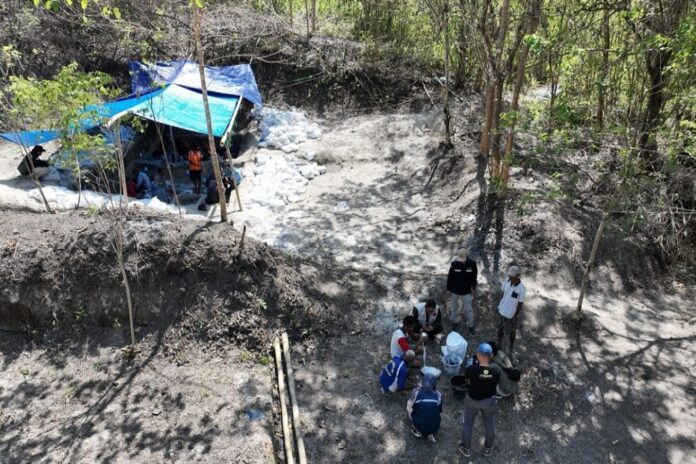In a groundbreaking archaeological discovery, the Geological Agency under the Ministry of Energy and Mineral Resources has unearthed a treasure trove of ancient fossils in the Mala Huma Site, located in the province of Nusa Tenggara Timur, Indonesia. This momentous find includes the remains of a prehistoric elephant, known as Stegodon florensis, and jawbones from the iconic Komodo dragon. The fossils, estimated to be hundreds of thousands of years old, provide a fascinating glimpse into the distant past of Indonesia’s diverse and rich ecological history.
The Geological Survey Center team, comprising skilled paleontologists, has been diligently conducting periodic surveys and excavation efforts at strategic locations based on comprehensive research, scientific literature, and invaluable input from local communities. Their tireless pursuit of historical revelations has led to this remarkable discovery of prehistoric elephant and Komodo dragon in the Mala Huma Site.
According to Head of the Geological Survey Center, Hermansyah, the fossil of prehistoric elephant and Komodo dragon excavation marks an ongoing quest for scientific knowledge, one that has spanned generations since the Dutch colonial era.
The meticulous process of uncovering these ancient treasures is met with great care and precision. As the fossils are revealed and prepared for removal, a delicate procedure ensues involving the application of a bone coating using bandages encased in gypsum. This strategic measure safeguards the fossil remains during the delicate lifting and transportation process to the Geological Agency’s headquarters in Bandung.
Upon arrival at the Geological Agency office, the fossils undergo meticulous handling and preparatory stages in anticipation of their eventual reconstruction and public display at the esteemed Geological Museum. These artifacts, hailing from eras long gone, will be showcased to captivate audiences and serve as a testament to Indonesia’s ancient biodiversity and geological heritage.
The Mala Huma Site, situated in the Nagekeo Flores Regency, Nusa Tenggara Timur, has emerged as a crucial location for paleontological exploration and excavation. Its significance lies in its status as a National Strategic Project (NSP), a testament to its pivotal role in advancing scientific understanding and preserving Indonesia’s cultural and ecological legacy.
In parallel, the Geological Survey Center collaborates with the University of Wollongong Australia at the nearby Mata Menge Site in the Ngada Regency, where the excavation of ancient elephant fossils (Stegodon florensis) and stone artifacts, including cores and flakes, has yielded invaluable insights into prehistoric life on Flores Island.
The Indonesian Government’s efforts to protect and showcase the nation’s geological and archaeological wonders are exemplified by the collaboration with local governments to establish site museums. Utilizing existing government-owned buildings or spaces, these museums will serve as vital repositories for prehistoric artifacts, fostering community-based engagement and encouraging public appreciation for Indonesia’s rich heritage.
In the construction of these site museums, the Geological Agency’s commitment to preserving Indonesia’s natural treasures is showcased through meticulous curation of exhibits and thoughtful design, adhering to museum principles.
The agency’s capacity-building initiatives will empower local communities in managing and safeguarding their geological heritage, ensuring a sustainable and inclusive approach to promoting Indonesia’s ancient history and environmental significance.
This latest archaeological breakthrough aligns with the Indonesian Government’s broader vision of fostering national pride in the country’s natural wonders and ancient past. The discovery of these ancient fossils is a testament to the significance of ongoing scientific exploration and historical research, underscoring the importance of preserving and celebrating Indonesia’s rich ecological heritage for generations to come.























